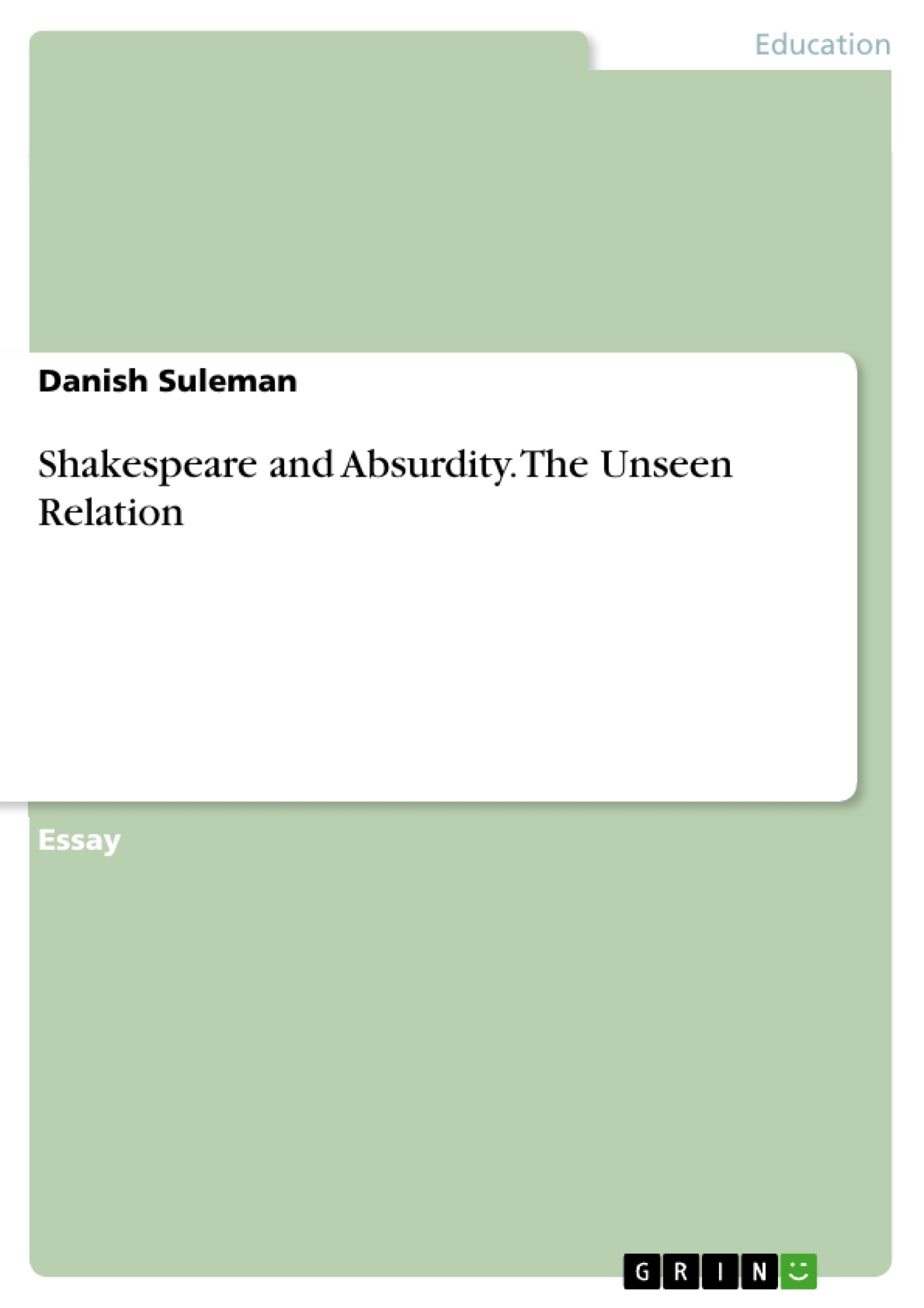The term “absurdity” is very well known in literature and frequently used by the writers of post 2nd World War. They use this term in the manner of its meaning or even more than that in their works. The effects of War and human sufferings from that caused absurdism to flourish and also spread Nihilism, meaninglessness, nothingness.
The aim and motive of this paper is to prove that the idea of absurdism may be new which is observed by absurd writer on human bizarre situation, but the existence of absurdism was already been used in the writings of Elizabethan writers or before that.
In these writers the king of drama, William Shakespeare was also one of the most prominent in whose writings the existence of absurdity can easily be traceable when he is well known for his tragedies and comedies. Although this existence was not noticed by or tagged by the writers or critics of that time as absurdism, there was its presence on the large scale. This paper is going to compare the level of absurdity among the playwrights of absurd and absurdism in the selected works of Shakespeare. The idea here is that the writer who is still incomparable also created the levels of absurdity in his plays unintentionally without being aware of the notion of “Absurdism”.
Inhaltsverzeichnis (Table of Contents)
- INTRODUCTION
- ABSURDITY IN SHAKESPEARE'S WORKS
- King Lear
- Hamlet
Zielsetzung und Themenschwerpunkte (Objectives and Key Themes)
This paper aims to explore the presence of absurdism in the works of William Shakespeare, specifically in his plays "King Lear" and "Hamlet." While absurdism is often associated with post-World War II literature, this paper argues that its roots can be traced back to Elizabethan drama.
- The concept of absurdism in literature
- The connection between absurdism and the human condition
- The portrayal of absurdism in Shakespeare's plays
- The comparison of absurdism in Shakespeare's works to modern absurdist writers
- The presence of absurdism in human behavior and societal structures
Zusammenfassung der Kapitel (Chapter Summaries)
The introduction provides a definition of absurdism and its origins, tracing its presence in literature back to the ancient Greek period. The paper then focuses on the central argument that Shakespeare's works, particularly "King Lear" and "Hamlet," exhibit elements of absurdism.
The chapter on "King Lear" analyzes the play's thematic connections to Beckett's "Waiting for Godot," highlighting the shared themes of meaninglessness, loss, and the absurdity of human behavior. The chapter also examines the storm scene in "King Lear" as an example of absurdist imagery and dialogue.
The chapter on "Hamlet" explores the play's portrayal of the psychological condition of its main character, Hamlet, and how his absurd behavior stems from the traumatic discovery of his father's murder and his mother's subsequent marriage to his uncle. The chapter examines Hamlet's internal conflict and his existential questions about the meaning of life.
Schlüsselwörter (Keywords)
The main keywords and focus topics of this paper include absurdism, nihilism, meaninglessness, Shakespeare, King Lear, Hamlet, Waiting for Godot, and the human condition. The paper explores the concept of absurdism as a literary and philosophical framework, examining its presence in Shakespeare's works and its relevance to the human experience.
- Quote paper
- Danish Suleman (Author), 2016, Shakespeare and Absurdity. The Unseen Relation, Munich, GRIN Verlag, https://www.grin.com/document/343005



